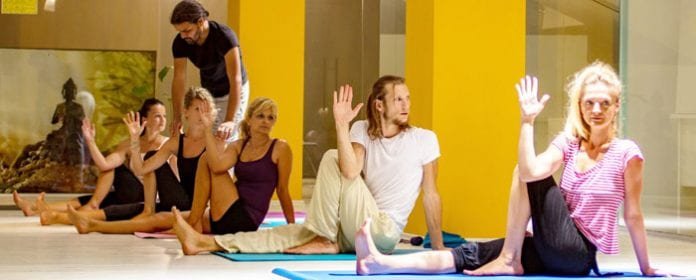Last Updated on March 12, 2024 by admin
Investing in oneself is very important and what better way to do this than yoga. Yoga has four major principles which are love, action, mental and physical, and wisdom. If you are searching for a yoga teacher training program, it is important to understand the differences between the 200 hour and 300 hour teacher training. The official yoga teacher training body is called Yoga Alliance. Now let’s get into it.
- A 200-hour teacher training is the most common training program available for the basic level of yoga teacher training recognized by Yoga Alliance. The 300-hour program on the other hand is for individuals who have already completed the 200-hour training. It is sometimes called ‘Advanced Yoga Teacher Training’ and attempts to build on the foundation of the 200-hour teacher training.
- When you finish the 200-hour training program, it signifies you are ready to teach yoga, take the 300-hour training, and enlist as a Registered-Yoga-Teacher 200 with Yoga Alliance. The 300-hour training however is designed for individuals who have completed their 200-hour training and certifies them to enlist for a Registered-Yoga-Teacher 500 with Yoga Alliance having completed 500 hours of yoga teacher training.
- As the name implies, the 200-hour teacher training is spread over 200 hours of study. The 300-hour teacher training is more extreme and is spread over 300 hours of training. However, these hours can be spread over a month or even longer duration of one to three years to fit into busy schedules.
- The curricula for the two yoga training are different. The 200-hour training covers the study of foundations in yoga philosophy, anatomy, postures, history, meditation, and also life coaching. It also provides enough practical teaching practice.
- The 200-hour teaching training program personal trainer in Los Angeles is for trainees who just want to test the waters and understand the yoga practice. The 300-hour training program has the same subjects as the 200-hour programs. It teaches in-depth things about yoga and practices also like advanced asana, advanced meditation, mudra, bandhas, kriyas, and therapeutic applications of yoga.
Note: These training programs are developed to become a teacher but it is not necessary to teach once you’ve completed your training. The training can be taken to just understand the philosophy of yoga.
- The 300-hour, on the other hand, requires greater dedication from the participants. It aims to enhance your ability to evaluate and analyze various categories of yoga classes and also obtain important and advanced yoga doctrines.
- Tuition fees for a 300-hours training program can be thousands of dollars higher, sometimes even two times the cost of a 200-hour training program. Fees can be discussed with your preferred school.

Conclusion
It is important to note that it is not mandatory to obtain a certificate from Yoga Alliance to teach yoga. Completing your hours is enough. However, enlisting with Yoga Alliance might increase your credibility if you are looking for a job. There are different yoga schools to pick from. You must do your due diligence by looking at the curriculum to ensure you are picking the best option for you.
Apart from this, if you are interested to know more about ACTP VS ASCTH: THE RIGHT PATH FOR YOU then visit our Health category
















